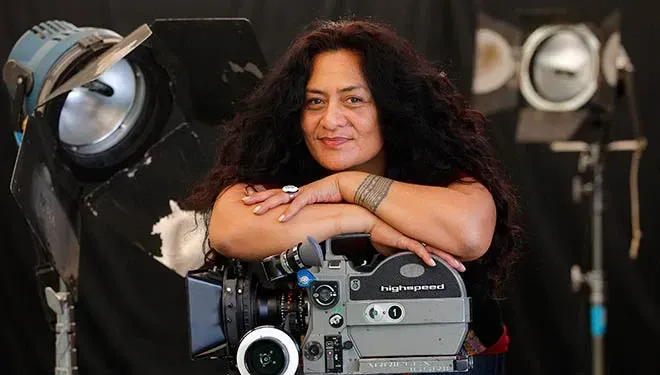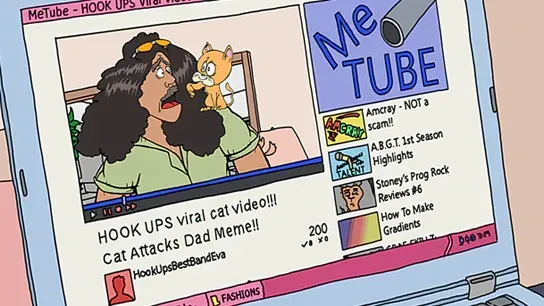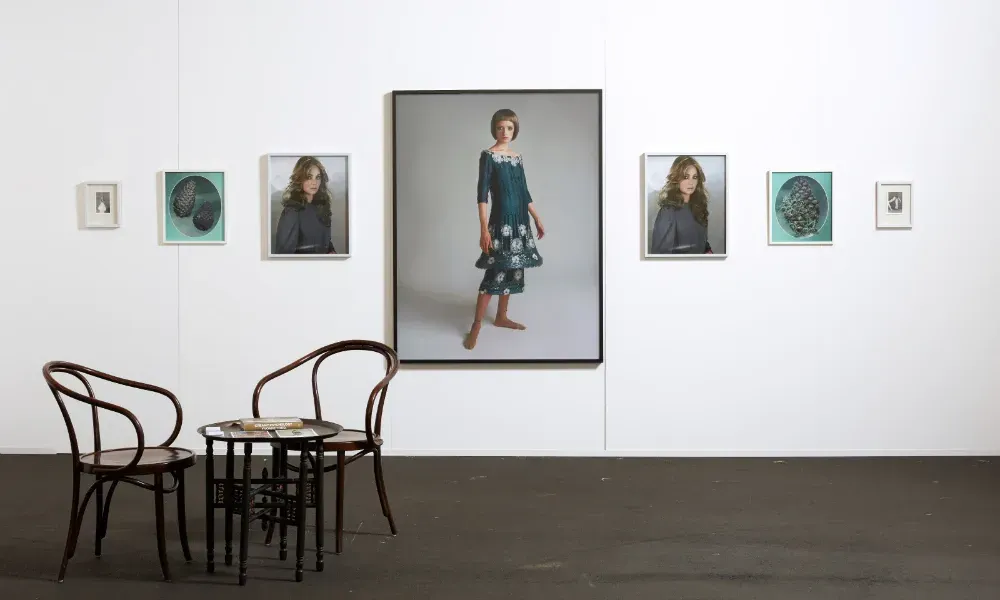Ten artists impacting Aotearoa: Meet your 2019 Laureates
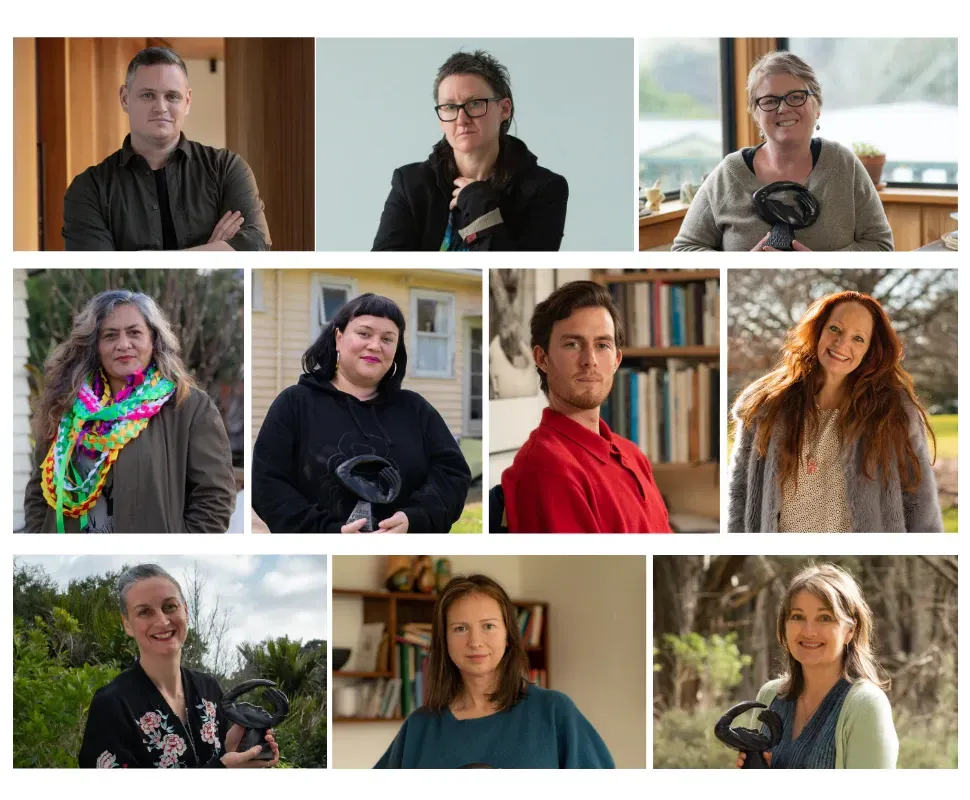
Tonight, some of the country’s most extraordinary artists have been named as the Arts Foundation 2019 Laureate Awards recipients at the annual New Zealand Arts Ball held in Auckland.
Awarded each year, these prizes are designed to not only celebrate and recognise the impact of top artists, but also to provide them with financial support. The $25,000 awards enable Aotearoa’s most outstanding artists to develop their potential for future growth, benefitting not just themselves, but their communities, their disciplines, and even New Zealand as a whole.
Array of artistic disciplines
Acting as a member of the selection panel for the Arts Foundation Laureate Awards is no easy task. The annual prizes recognise a vast array of artistic disciplines, reinforcing the Arts Foundation’s belief that art cannot be limited to just one thing.
To be chosen for the selection panel is also a feat in itself, with judges representing both senior expertise in their fields, and reflecting the span of talent from different regions throughout New Zealand. The awards may be physically presented in Auckland, but they endeavour to embrace the spirit of the arts communities across the entire country. The artists recognised tonight are certainly not limited to a single postcode, and neither has been the impact of their work.
And the 2019 Arts Foundation Laureates are …
-
Ruth Paul – Mallinson Rendel Illustrators Award
-
Louise Potiki Bryant – award for Choreography & Dance
-
Kris Sowersby – award for Design & Typography
-
Solomon Mortimer – Marti Friedlander Photographic Award
-
val smith – award for Performing Arts
-
Pietra Brettkelly – Dame Gaylene Preston Award for Documentary Filmmakers
-
Laurence Fearnley – award for Literature
-
Yvonne Todd – Theresa Gattung Award for Female Arts Practitioners
-
Sima Urale – Burr/Tatham Trust Award
-
Jessica Hansell aka Coco Solid – award for Mixed Media
Impacting their communities
Not only selected for their outstanding career, each artist has been chosen for the impact the award will have on their next step, and/or the impact they currently have on New Zealand or their community. Choreographer, dancer and video artist Louise Potiki Bryant described how her wider community was affected by a trilogy of her works inspired by “stories of resilience in times of struggle for my iwi Ngāi Tahu and in particular for Ngāi Tahu women”.
“During the creation process I attended a Ngāi Tahu artist hui where I presented a video of a work-in-progress of the work. There I met Greyanna Barrett who saw her own story reflected in what I had presented. She also saw her mother’s and grandmother’s experiences reflected, and she spoke to me about how she wanted to tell her story. It was a story which revealed the effects of colonisation on the women in her whānau. So I spent time with her and interviewed her. The work became about her whānau’s experiences and that was the beginning of my process making works which were about and for my community.
I then went on to make another work entitled Whakaruruhau about Araiteuru Marae in Ōtepoti. This work was also about my Great Aunty Emma Potiki Grooby who had been instrumental in helping to establish Araiteuru Marae as an urban marae for all Māori, a place for all, where I had spent a lot of time in my youth. In 1997, the wharenui at Araiteuru Marae burnt down in an arson attack. The wharenui has since been rebuilt but before this re-building I interviewed members of my whānau about the effect this arson attack had on them and their voices were the soundtrack for a dance installation and film called Whakaruruhau which means shelter. That was what the marae and my aunty were for us.”
Another winner who is passionate about giving back to her community is filmmaker Sima Urale. Sima says that returning to Samoa to mentor has been one of her most fulfilling experiences.
“A guy wanted to start up a company doing commercials and had never done anything like that. I started shooting these little commercials for him and showed him how it’s done with one little camera and a group of village men and I trained them up. Every year I went back it got bigger and bigger, I upskilled them and showed them different techniques and he grew his business into a big company.
Training and transferring the discipline to other people that wouldn’t necessarily have the option of going to film school is really fulfilling. They don’t have polytechnics nearby to go and study. You’re making an impact, opening them up to something that they’ve never thought of before. It’s really, really cool.”
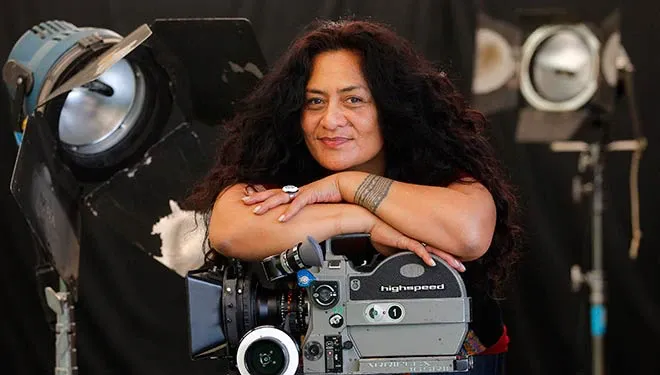
Sima Urale. Photo via teara.govt.nz
Pietra Brettkelly also actively mentors a number of emerging filmmakers. Keeping things frank, she tells her mentees that filmmaking is “the most remarkable life, the most extraordinary life. But if you are not up for really tough times, real financial hardship, real struggles, facing criticism, putting belief in the story, in your film above all else, it’s not for you.”
Pietra continues to explain her craft, “It's a calling, I suppose. It is bloody hard. I feel like I rip out my heart with each film. I hold it in my hand and offer it to investors, to supporters, to the first audience at my first screening. It is the most exposing thing, more exposing than standing up nude, because what I'm saying is, this is a subject that I think is important. Any creative thing can be pulled apart, because creativity is so subjective. And of course a team has helped me make it, giving their love towards my goal.”
Transdisciplinary performance artist val smith uses their craft to explore the ideas of gender and sexuality and to build their own community, “Gender and sexuality are quite entangled for me, but for some people they’re a separate reality. Exploring that through my art practice has been a real place of joy. It is a creative space that’s allowed me to connect with other artists who are also working around gender and sexuality. It’s provided me with a way to build community and a feeling of belonging that sits outside of my normative family, and that’s been huge for me.”
Their collaborator Richard Orjis and val share this comfort of community by running a “a queer reading group here at AUT and have made a point to create a supportive social space for younger queer and transgender diverse artists to come and meet.“
Storyteller Jessica Hansell aka Coco Solid is another of the Laureates that has a strong focus on community and mentoring. Of this, Coco says, “That's not a conscious thing anymore. It's just a normal part of how I work. Collaboration and bringing people the gifts and opportunities that art allows – that's my love language. I don't look at it like a traditional alpha-mentor, taking in the creative troubled children, every artist I work with is my equal. It doesn't matter what stage they're at, when we’re creating, everybody has something that the other person can't contribute. I naturally pull people towards me, because I'm always creating, working at a high but accessible level, and I have high standards for myself, a point-of-difference whenever I'm working. The people around me end up doing that as well, and we always end up building some something special.”

Aroha Bridge - created, co-written and co-directed by Coco Solid. Photo via nzonscreen.com
Defining art
The awards also signify the start of New Zealand’s first ever Arts Month. This year, their campaign focuses on defining ‘art’. If it isn’t definable that will be captured too. And they are going out to explore why art matters.
This is especially relevant as the awards cover such a range of disciplines. Typeface designer Kris Sowersby even said that the arts is “not a world that I consider myself a part of.”
While he doesn’t consider himself an artist, Kris does see art as crucial to his work, “To me, art is a professional resource. I use art thinking and the ideas of other artists as a resource for my work and my own way of thinking.
Kris continues to explain, “I like the philosophical aspect of art, how the artist articulates their thinking, and how it changes my own thinking.”
Answering why it matters to him, Solomon Mortimer focuses on his own craft, photography, “personally I think it’s really important here to archive the social landscape in New Zealand through images. And in New Zealand there has been such a strong tradition, so many strong practitioners that have done this for so many generations now that it is something that I want to continue doing and it's something that I want to do well.”
“Art to me is all about wonder. I think it’s a bit like nature in that sense. It has the ability to stop you in your tracks and amaze or challenge or inspire you. Art makes your world bigger. I think imagination and curiosity are crucial to the way we inhabit this world” - Laurence Fearnley
Writer and illustrator, Ruth Paul speaks for art when she says “It could be a fantastic illustration, or it could also be a kid’s show, down at the local hall where the boy who gets up and tap dances breaks my heart. It's the thing that moves me away from everything I know and puts me in touch with an emotion whether that’s elation or sadness. In short, art is the human-made thing that moves me.
To novelist and writer Laurence Fearnley, “Art to me is all about wonder. I think it’s a bit like nature in that sense. It has the ability to stop you in your tracks and amaze or challenge or inspire you. Art makes your world bigger. I think imagination and curiosity are crucial to the way we inhabit this world, and art gets that.”
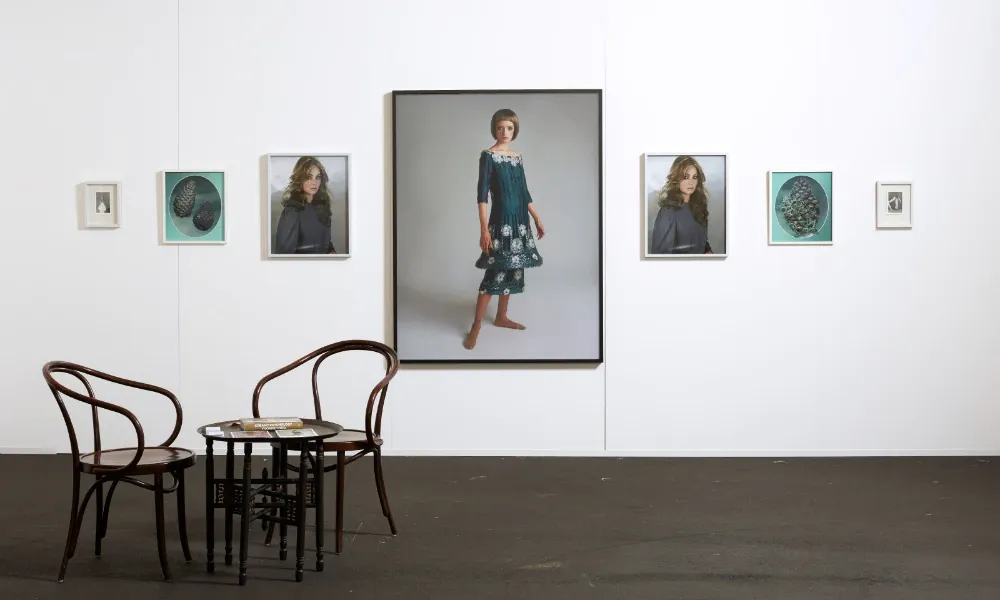
Haul, Turquoise, Smoke, Pine Cone Study 1 & 2, Interesting by Yvonne Todd with McLeavey Gallery at Auckland Art Fair 2019 - photo via McLeavey Gallery.
Whereas acclaimed photographer Yvonne Todd who sees photography as “just a means of documenting what I’m setting up in front of the camera. Cameras and lights, I just see as tools to get the job done.” she says, “I don’t spend a lot of time pondering what art means to me and why it matters. I make art because I’m compelled to.”
One thing all of these award winners agree on is that art is a powerful force. It drives people to create, it motivates people to experiment, it can evoke emotions and stop people in their tracks. This year’s recipients have proven that art can bring people together. And for that, and the gifts they’ve given us, we celebrate them tonight.
This September is New Zealand Arts Month. You can read more and join the kōrero on Artsmonth.co.nz
